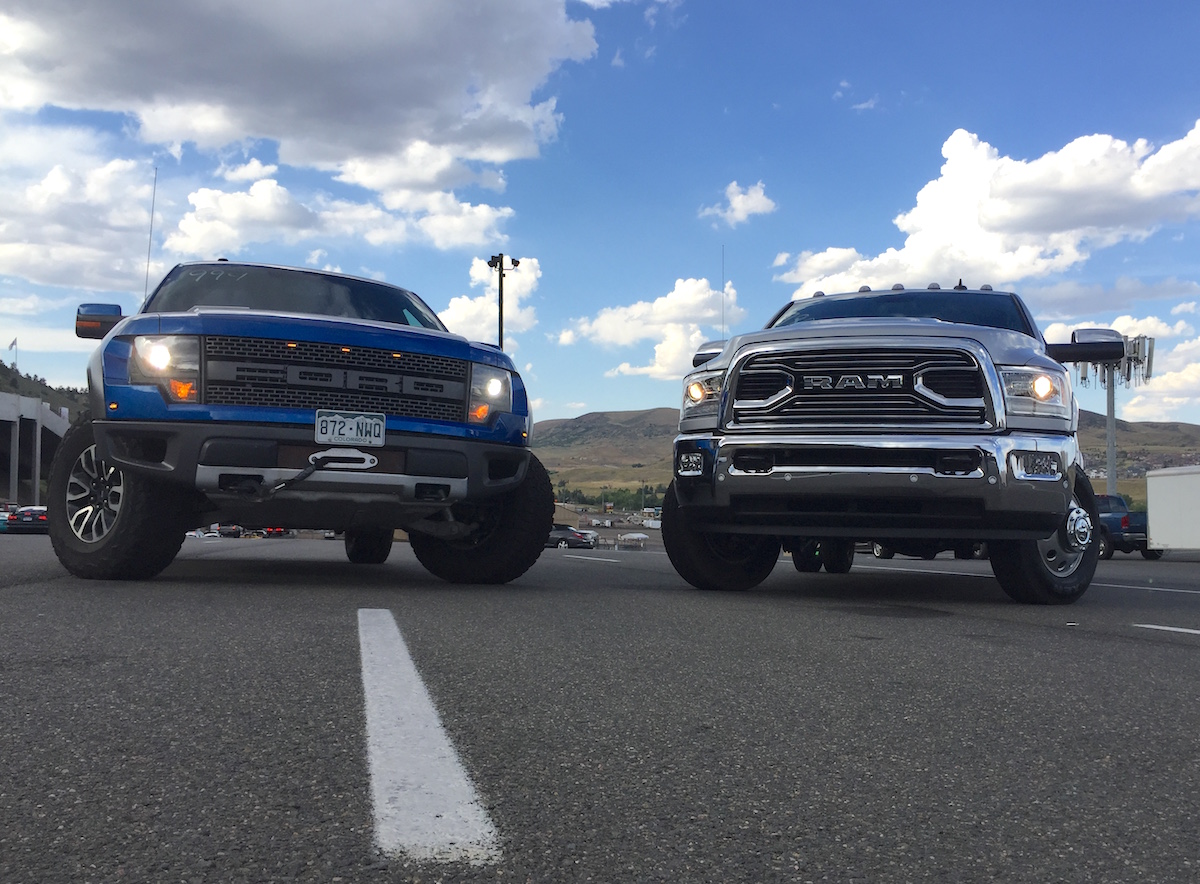
On this edition of AskTFL, we’re going to take a look at the differences between a single-rear wheel hd truck and a dually.
This question comes to us Josh, and it is a fairly common question when it comes to hauling heavy trailers.
I have a question regarding if we “need” a dually for the 5th wheel we are about to get.
I just finished reading my copy of Truck Nuts, absolutely loved it! Thank you for putting all of this together for us.I’m looking to get a 2017 or 2018 F-350 Platinum with a 4.10 rear end.The 5th wheel we are looking to get is a 2019 jayco pinnacle 36 ft with a uvw (unloaded vehicle weight) of about 14,000 lbs and a gvwr (gross vehicle weight rating) of about 17k. Hitch weight will be around 3k.We will be stationary for the most part with some traveling a couple times a year.I’m leaning toward a dually just for shear safety and capacity. However this will also be a daily driver truck and everyone says we will hate the dually here in Las Vegas.Please help me decide. I tried to give you all the info I hear you say you need but may have missed something. I’ll be glad to give anything further.Thank you for your time and help,
Joshua
Thanks for the question Josh! We can dig into this one for you.
So first of all, it seems Ford does not offer the 4.10 rear axle ratio on the single-rear wheel (SRW) truck, only on the dually. The lowest rear-end on the SRW is a 3.55, so that could be a deal breaker right there. If you really want the extra torque of the 4.10s, you have to go dual-rear wheel (DRW).

A 2018 Ford F-350 SRW Crew Cab with 4×4, a 3.55 and an eight-foot box is good to tow up to 20,400 lbs on a gooseneck (we’ll get to fifth wheel in a moment) while a 2018 F-350 DRW Crew Cab with 4×4, a 4.10 rear end and an eight-foot box is ready to tow 31,300 pounds on its gooseneck.
Here’s what is more important though. If you go with Ford’s fifth-wheel kit from the factory (and we recommend you do for ease of installation and a factory-backed warranty), the maximum you can tow is 18,000 lbs with the SRW and 27,500 on the DRW thanks to the weight ratings on the hitches themselves. So either truck will do the job, but the DRW will feel more stable doing it.
Now, both the single- and dual-rear wheel will handle the weight when it comes to towing power, but how about payload?
The maximum payload rating for the F-350 SRW Crew Cab 4×4 with a long bed is rated at 4,440 pounds, while the payload rating for an F-350 DRW Crew Cab 4×4 is 6,530 lbs.
This is an important distinction. If the tongue weight of the trailer is around 3,000 lbs (dry hitch weight is listed at 2730 lbs.), you will be leaving yourself with a smaller amount of capacity for your passengers and stuff with the SRW.
If you take the 4,440 pounds of payload and subtract an even 3,000, you’re left with 1,400-lbs to accommodate passengers and anything you have in the truck. With the 6,530-lb payload rating of the DRW, you would be left with a much larger 3,530 pounds for passengers and cargo.
Andre Smirnov Notes: You are considering getting a luxurious Platinum version of the truck. Keep in mind that the more optional equipment the truck has, the less the payload rating. A platinum F-350 SRW can haul up to 4,400 lbs when properly equipped, but the payload rating on your Platinum will likely be significantly less than 4,440.

Another important thing to note about DRW versus SRW: tailgate height. The height of the tailgate and bed rails is an important consideration when looking at towing a fifth-wheel trailer. On an F-350 SRW, the top of the tailgate sits at 59.6 inches, while the DRW is slightly lower, sitting at 58.7 inches. That lower height will mean more clearance for your trailer.
So it’s safe to say going for the dually will leave you with more leftover capacity, which means you won’t be straining the truck as hard to tow that trailer. A SRW will do the job, but you will be much closer to the limits of that truck.
As for daily driving, there is no question that a SRW is easier to handle in traffic and around town. You have to constantly remind yourself that the extra wheels are back there and to watch out for them when taking tight corners or backing into parking spots (if you even fit at all). On a Ford F-350, the rear end of a DRW is 16-inches wider than that found on the SRW, a sizeable difference and one you’ll notice.
Having driven many DRW trucks into downtown Toronto in heavy traffic, I can confirm that you do get used to having those wide fenders out back, and once you’ve driven with them for a while, it becomes second nature to check your mirrors to make sure your wide rear-end is not going to hit anything.
So it might mean skipping the drive-thru in or parking at the back of the lot where there’s a little more space, but in my books, that inconvenience is worth having the added capacity and safety of the DRW.
Dually all the way!
















![Which is More Reliable: 3.5L EcoBoost or 5.0L V8? [Reader Question] Second-generation 3.5-liter EcoBoost engine](https://tfltruck.com/wp-content/uploads/2016/05/Second-generation-35-liter-EcoBoost-engine.jpg)
![Which Silverado Engine to Get: 5.3L or 6.2L V8? [Ask TFLTruck] 2016 chevy silverado](https://tfltruck.com/wp-content/uploads/2015/10/2016-chevy-silverado-grille.jpg)
